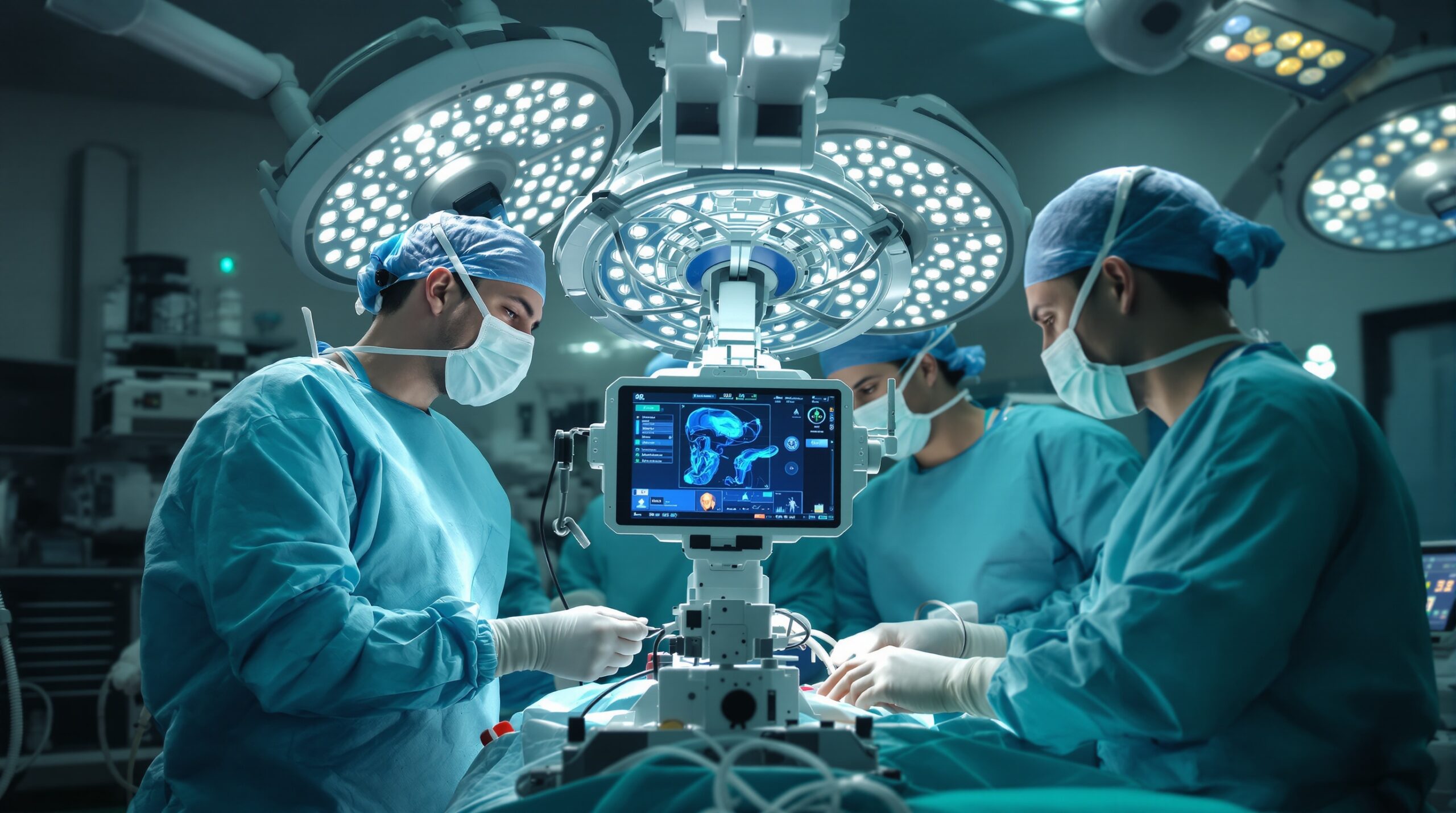Artificial Intelligence (AI) is making significant advancements in healthcare, particularly in surgical settings. Surgeons now rely on intelligent technology to perform complex procedures with heightened accuracy. These systems leverage machine learning, data analytics, and precision tools to assist human hands in the operating room. Improvements in patient outcomes and a reduction in surgical errors often result from the integration of AI. As adoption grows, hospitals are witnessing a transformation in both procedural techniques and post-operative care.
Overview of AI in Surgery
AI technology in surgery harnesses large datasets to learn, predict, and adapt in real time during operations. These systems process information from medical imaging, patient records, and previous surgeries to provide actionable insights. Decision support tools guide surgeons through complicated procedures, making recommendations based on current evidence and historical data. Advanced robotics powered by AI now offers unparalleled dexterity and vision compared to human capabilities alone. While surgeons remain the primary decision-makers, AI acts as a vital extension to their skills.
Key Technologies at Work
Robotic-Assisted Surgery
Robotic systems like the da Vinci Surgical System empower surgeons with enhanced precision and flexibility. These machines can execute minuscule movements far steadier than human hands allow. Surgeons control the robots via specialized consoles, which translate their movements into micro-actions. The system’s AI algorithms help optimize positioning and force while minimizing risk to surrounding tissues. This collaboration leads to shorter recovery times and fewer post-surgical complications for patients.
Image Analysis and Navigation
AI-based image analysis tools can interpret X-rays, MRIs, and CT scans in moments. Accurate identification of anatomical structures helps surgeons plan incisions and approaches with confidence. Navigation systems use these insights for real-time, 3D mapping during surgery. By highlighting critical structures and potential hazards, AI reduces the likelihood of errors or unintended harm. As a result, procedures once considered high-risk have become safer and more predictable.
Predictive Analytics
Predictive analytics models assess risks prior to surgery by analyzing vast datasets. These platforms consider patient history, genetics, and even social factors. Surgeons receive tailored recommendations on best practices and anticipated complications. Intraoperative sensors capture vital signs and surgical progress in real time, continuously updating the AI system’s projections. This approach ensures a dynamic response to changing conditions within the operating room.
Benefits for Surgeons and Patients
AI assistance in surgery improves precision, efficiency, and consistency. Surgeons benefit from comprehensive data insights and visualizations unavailable from traditional methods. Fatigue and stress, common contributors to human error, have less impact as AI supports decision-making. For patients, procedures become less invasive, with smaller incisions and reduced trauma to tissues. Recovery times tend to shorten, and rates of infection or complications decrease significantly.
Enhanced Training and Skill Development
AI-powered simulators are now essential tools in surgical education and training. Virtual environments provide realistic practice scenarios based on actual case data. These simulators offer instant feedback about technique, accuracy, and efficiency. Trainees and seasoned surgeons alike use this feedback to master intricate procedures without endangering real patients. Continuous assessment ensures that healthcare providers maintain high standards before they enter the operating room.
Challenges and Limitations
Despite the promise of AI, challenges remain in its widespread surgical adoption. Integration with legacy hospital systems can be costly and complex. Data privacy and cybersecurity are pressing concerns as medical records become more digitally accessible. Misinterpretation of AI recommendations by undertrained staff sometimes occurs, underscoring the need for ongoing education and oversight. Regulatory bodies must consistently update safety and ethical standards to keep pace with advancing technology. The cost of implementing and maintaining advanced AI systems can also restrict access in lower-resource settings.
Ethical Considerations
AI-driven surgeries raise important ethical issues in patient care and professional responsibility. Transparency in decision-making is paramount, requiring clarity on whether choices stem from the surgeon’s judgment or AI suggestions. Informed consent protocols increasingly include explanations of AI roles during surgery. Accountability becomes complex when machines make or influence critical decisions. Professional organizations now advocate for clear guidelines to clarify these responsibilities and protect patient rights.
Innovations on the Horizon
Researchers continue to push boundaries by integrating deeper AI learning and computer vision into surgical robotics. Next-generation systems aim to “see” better than humans, identifying anatomical variations or disease markers invisible to the naked eye. Some platforms now feature autonomous capabilities, allowing robots to perform simple surgical steps under supervision. Scientists are advancing tactile feedback technology so robots can “feel” tissue during an operation, offering another layer of sensory data. These enhancements promise to support even the most complex and delicate surgical interventions.
Global Impact and Accessibility
AI technologies offer the potential to standardize surgical quality worldwide, irrespective of a hospital’s location or resources. Tele-surgery, enabled by advanced robotics and AI, connects expert surgeons with patients in remote or underserved communities. Cloud-based platforms facilitate real-time analysis and procedural guidance to diverse clinical settings. As these solutions become more affordable and scalable, low- and middle-income countries stand to benefit from improved surgical outcomes. Bridging this gap could mark a major step toward global health equity.
The Surgeon’s Role in a High-Tech Future
Surgeons remain central to the operating room, even as AI augments their skills and judgment. Human intuition, empathy, and creativity are irreplaceable components in patient care. The relationship between surgeon and machine is best viewed as a collaboration, where each brings unique strengths to the table. Embracing these technologies does not diminish the art of surgery; instead, they empower clinicians to achieve higher standards. As the medical landscape evolves, continued learning and adaptation become essential for both current and future surgeons.
Conclusion
Innovative AI technology is reshaping surgery, making even the most complex procedures safer and more effective. With every advancement, the partnership between surgeons and intelligent systems grows stronger. While challenges remain, the potential for improved patient care and global health outcomes is immense. As hospitals, clinicians, and tech developers work together, the operating room of the future promises better outcomes for all.

